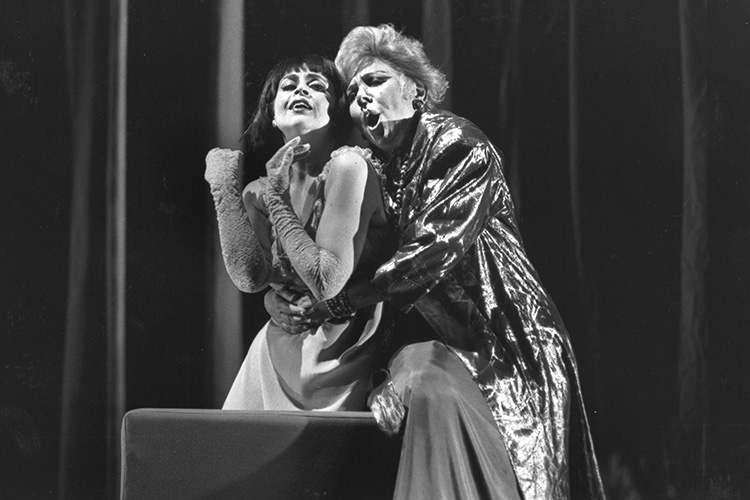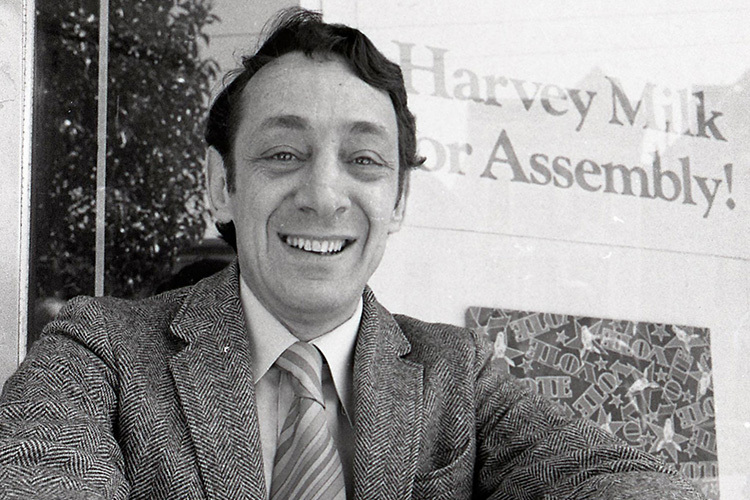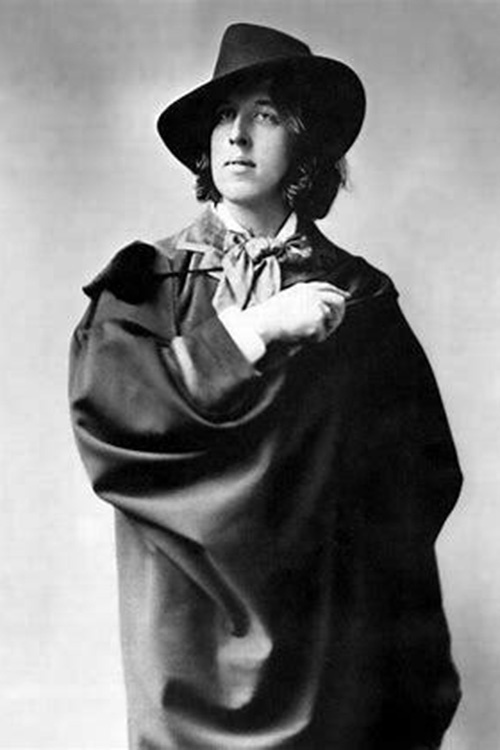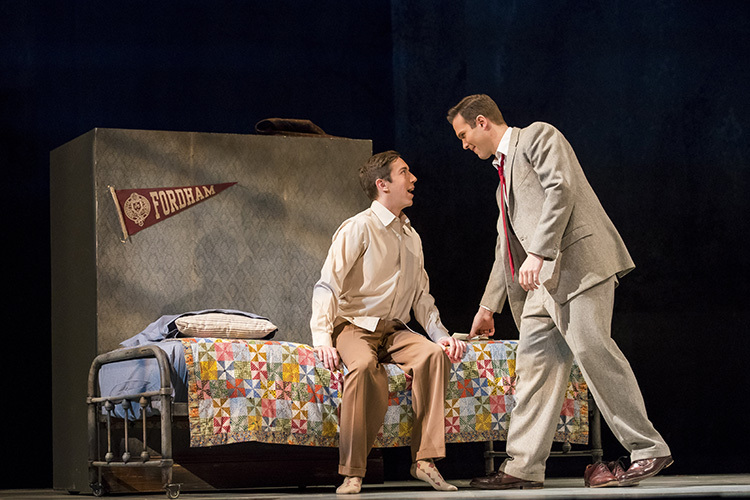June 24, 2021
A long journey: Celebrating LGBTQIA+ characters in opera
During Pride Month, LGBTQIA+ characters are celebrated everywhere in theater and film, but not as often in opera. Perhaps that’s simply because opera doesn’t have many to choose from, but they’re certainly there, and have been even in opera’s early days.
It’s up to the stage director, but a case can and should be made for Oreste and Pylade in Gluck’s Iphigénie en Tauride (1779) being gay. In the entire history of opera, there’s no relationship between men that’s closer than with these two, who are absolutely ready and willing to die for each other. No romantic attachment to a woman is indicated by either of them. When they’re suffering together in prison, their profound feeling for each other is clear, as it is later in the opera, when each is begging the other to let him die.
No overtly gay character shows up in opera until the lesbian Countess Geschwitz in Berg’s rivetingly dramatic Lulu (1937). Elegant, wealthy, and mysterious, she latches onto Lulu as the object of her affection, puts her own life in danger for Lulu’s sake, follows her to Paris and then to London, where Lulu treats her very badly. Alas, Geschwitz is killed by Jack the Ripper, just a few seconds after he kills Lulu. In her final moments of life, Geschwitz sings, “Lulu! My angel! Let me see you one more time! I am close! Stay close! For eternity!”

Evelyn Lear (right) as Countess Geschwitz with Catherine Malfitano in the title role of Berg’s Lulu (1987/88 Season) at Lyric.
The first LGBTQ relationship in twentieth-century opera that isn’t fraught with tragedy is between Dov, a musician, and his lover Mel, a writer, in Sir Michael Tippett’s The Knot Garden (1970). Each of them does indulge in serious flirtations with female characters, and midway through the opera it’s clear that their own relationship is about to end, but at least both of them are still alive at the end. That isn’t the case with Aschenbach in Benjamin Britten’s Death in Venice (1973), who dies in the opera’s final moments, gazing out to sea at the sight of young Tadzio, to whom he’s never been able to express his love.
It was in the 1990s that opera finally began to present LGBTQ characters who were less tortured. These included one of the most significant figures of the entire gay movement, San Francisco Supervisor Harvey Milk, the first openly gay elected official in American history. Stewart Wallace’s Harvey Milk (1995) movingly depicted both the public and private Milk, including the passionate romance between Milk and his lover, Scott Smith.

San Francisco Supervisor Harvey Milk (1930-1978), the first openly gay elected public official in America and subject of an opera named for him, composed by Stewart Wallace.
Based on the historical novel by Alma Routsong, Paula M. Kimper’s opera Patience and Sarah (1998) gave opera its first strong lesbian relationship, in this case one based on fact. In early nineteenth-century Connecticut, Patience, a young woman from a wealthy family, falls in love with Sarah, a farmgirl. They confront intense objections from their families, but they triumph over the obstacles in their path and, in the end, are able to leave Connecticut, buy a farm, and live happily ever after. It took more than 15 years for opera to present another positive, life-enhancing lesbian couple: in this case the opera was Ricky Ian Gordon’s 27, an enchanting look at another real-life pair, the Paris-based American writer Gertrude Stein and her devoted companion, Alice B. Toklas.
One of the most celebrated men of letters in nineteenth-century Britain, Oscar Wilde, was at the heart of Theodore Morrison’s opera Oscar (2013). A number of important literary works have been the basis of other operas centered on gay characters. Several of those characters appeared in Peter Eötvös’s adaptation of Tony Kushner’s magnificent play Angels in America (2004), particularly memorable for two gloriously out-and-proud characters — the HIV patient Prior Walter, and Belize, the nurse who cares for him.

Oscar Wilde, protagonist of Theodore Morrison’s opera Oscar.
There have been other important LGBTQ-themed operas since then, such as Jake Heggie’s Three Decembers (2008), Charles Wuorinen’s Brokeback Mountain (2014), Jorge Martín’s Before Night Falls (2010), and Gregory Spears’s Fellow Travelers (2016, presented by Lyric in 2017/18). They all present emotionally complex gay characters whose relationships are, unfortunately, doomed to fail (in some cases, tragically so), either because of their own tortured feelings, their dysfunctional families, or simply because of the repression imposed by the society surrounding them.

Jonas Hacker (left) as Timothy Laughlin and Joseph Lattanzi as Hawkins Fuller in Gregory Spears’s Fellow Travelers (2017/18 Season), presented by Lyric at the Athenaeum Theatre.
A huge step forward was Laura Kaminsky’s As One (2014), a one-character opera about a transgender woman. With the character conceived to be played by a male singer in the first act and a female singer in the second, the opera presents “Hannah Before” and “Hannah After,” bringing the audience into every stage of her complicated journey to discovering her true self.
Composers and librettists are only gradually figuring out that opera can offer LGBTQ-oriented plots that present gay people whose relationships can provide joy and uplift for the audience. Standard repertoire’s Figaro and Susanna, Cenerentola and Ramiro, Adina and Nemorino — after travails along the way — all get their happy endings. We need more of those for gay characters, who proved long ago that opera has a place for them.
